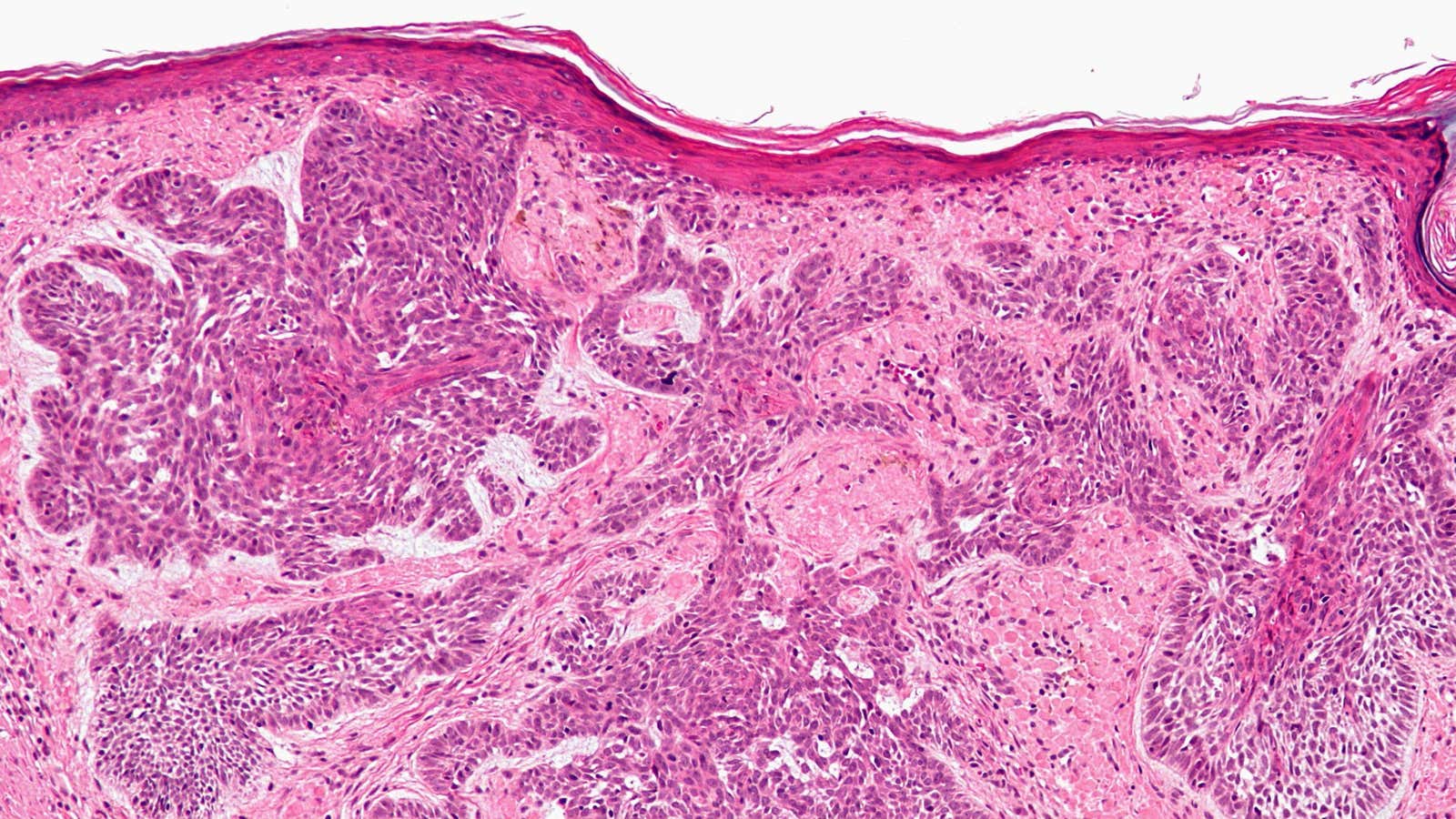The label on a bottle of sunscreen is a jumble of letters and numbers. One of those acronyms, UVA, refers to a specific range of ultraviolet light that penetrates to the deepest layers of skin and wreaks havoc on skin cells. Today’s sunscreens try to physically block UVA radiation from reaching skin cells, but scientists have developed another way of protecting skin from the inside with a new compound that works in the cells themselves.
Researchers from University of Bath and Kings College London teamed up to explore ways to disrupt the cellular processes that lead to cancer and photoaging, like sagging and wrinkling, that are caused by UVA exposure. They introduced the result of the work—a newly-designed compound—in a paper published in the Journal of Investigative Dermatology.
UVA radiation causes damage in two ways: by liberating free radicals and iron from cell components. Free radicals are highly reactive oxygen molecules and when they get loose in skin cells, they can damage DNA, proteins, and cell membranes. UVA also triggers the release of iron in cell mitochondria, a critical source of energy for cells. Eventually, energy production in the mitochondria ceases and the mitochondria’s membrane is broken. The iron then goes on to trigger the release of more free radicals throughout the cell by reacting with iron-oxygen compounds. All these free radicals “ultimately cause cell death,” says Olivier Reelfs, a pharmacology researcher at University of Bath who helped develop the compound.
If you can keep the iron in mitochondria “from interacting with its environment,” Reelfs says, you can keep it from forming more free radicals. The new compound does just that by essentially locking onto the iron and keeping it from reacting with other molecules in the mitochondria.
Reelfs and his team haven’t tested the compound on human skin yet, but “results are very encouraging on cells grown in the lab.” He estimates it’ll take three to five years of testing before their compound makes its way into sunscreen formulas, but when it does, “it could add another layer of protection” to current sunscreens. “The current sunscreens are not bad, but they can certainly be improved.”
